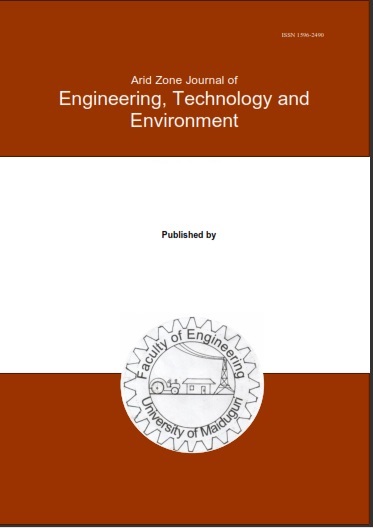Abstract
Traditional foods are preserved cultural heritage passed down from generation to generation, and their recipes have remained unchanged for centuries. Lamba is a traditional food processed from the blends of maize, cowpea and karkashi (false sesame leaves). However, if prepared and consumed, lamba enriched with different flour blends will provide a healthy alternative to consumers. This study aimed to prepare and evaluate the quality of lamba produced from wheat – cowpea – karkashi (Wck), wheat– soybeans – karkashi (Wsk) and lastly, wheat –bambara groundnut– karkashi (wbk) flour blends in three different ratios, (70:20:10, 60:30:10 and 50:40:10) where maize-cowpea -karkashi (Mck) is the control (in the ratio of 70:20:10). The total of ten (10) different samples were produced including the control. Proximate composition, functional and microbial content of lamba samples were determined. The proximate composition of the lamba such as moisture, protein, fat, ash, crude fiber and carbohydrate ranged from .40 –9.92%, 7.92 – 15.39%, 3.82 – 9.25%, 2.78 – 3.48%, 2.03 – 3.55% and 64.24 – 73.55% respectively. Subsequently, there are significant differences (p≤0.05) between the functional properties such as wettability, bulk density, water absorption capacity and swelling index of the flour blends which ranged from 50.13 – 68.18 sec, 0.60 – 0.76 g/ml, 58.93 – 105.58 %, 1.36 – 2.15% respectively. Also, wettability, bulk density, water absorption capacity and swelling index have been determined and the control sample (Mck) had the highest. Similarly, microbiological analysis shows the bacterial load ranged from 4.9 ×104 – 8.1 × 104 cfu/g and sample Wbk 3 had the highest Mck (control sample) had the lowest. However, there was no significant difference between all the remaining samples. additionally, fungal load ranged from 1.6 × 10 5 – 4.4 × 105 cfu/g and sample Wsk 2 had the highest fungal count while sample Wbk 3 had the lowest. Sensory attributes of lamba were evaluated ranging from 5.09 – 6.13 for texture, 5.01– 6.38 for aroma, 4.92 – 7.98 for taste, 4.61 – 6.08 for colour and 5.18 – 8.49 for overall acceptability. The study shows that lamba produced from different ratio of wheat, soybean, cowpea, bambara groundnut and karkashi contains higher nutritive value. It is also acceptable as compared to lamba produced from maize, cowpea and karkashi. Therefore, this study recommends that the blend of 60% wheat, 30% soybeans and 10% karkashi (Wsk 2) can be used for the production of lamba with the desired nutritional and sensory quality as alternative to soybean.

This work is licensed under a Creative Commons Attribution-NonCommercial-NoDerivatives 4.0 International License.
Copyright (c) 2025 ARID ZONE JOURNAL OF ENGINEERING, TECHNOLOGY AND ENVIRONMENT

